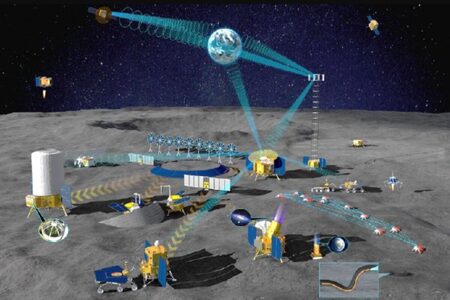
Azerbaijan has signed up for China’s International Lunar Research Station project on October 8, 2023. Li Guoping, chief engineer of the China National Space Administration (CNSA) and Samaddin Asadov, chairman of the Board of Azercosmos, Azerbaijan’s space agency, signed a joint statement on cooperation on the International Lunar Research Station (ILRS) during the 74th International Astronautical Congress (IAC), hosted by Azerbaijan, in the capital Baku.
A statement on CNSA’s website said the agreement will see CNSA and Azercosmos carry out extensive cooperation in the demonstration, implementation, operation and application of the ILRS, as well as training and other areas. The ILRS project aims to construct a permanent lunar base in the 2030s. The initiative is seen as a China-led, parallel project and potential competitor to the NASA-led Artemis Program.
China has now attracted around 15 signatories to its ILRS initiative including Russia, Venezuela and South Africa. The Asia-Pacific Space Cooperation Organization (APSCO), Swiss firm nanoSPACE AG, the Hawaii-based International Lunar Observatory Association (ILOA), and the National Astronomical Research Institute of Thailand (NARIT) have also signed joint statements.
China is setting up an organization, named ILRSCO, in the city of Hefei in Anhui province to coordinate the initiative. China is already working on a series of robotic missions to launch later this decade as precursors to the ILRS. The 2026 Chang’e-7 lunar south pole mission and 2028 Chang’e-8 in-situ resource utilization and 3D-printing technology test mission will lay the basis for the larger plan, according to CNSA. NARIT will be involved in Chang’e-7 through the Sino-Thai Sensor Package for Space Weather Global Monitoring payload.
In early 2024, China will launch a relay satellite named Queqiao-2, followed by the launch of Chang’e-6, which will be a first-ever lunar far side sample return mission. The Queqiao-2 satellite will provide communications support for the Chang’e-6, 7 and 8 missions.












Add Comment